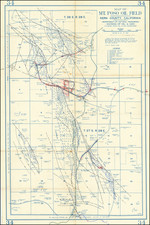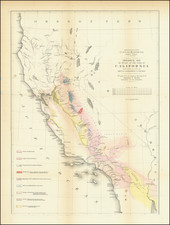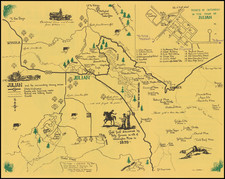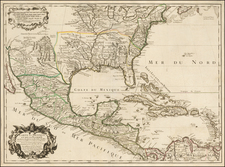Western Vacationlands by Rand McNally, with illustrations by William Willmarth and produced in Chicago in 1946, offers an intricate portrayal of the tourist attractions in the Union Pacific West region. As a product of the post-World War II era, this folding pictorial map, printed on both sides, evocatively captures the allure of Western America as seen through the lens of the Union Pacific Railroad.
The map draws on the collective consciousness of mid-20th century America, a nation eager for leisure after the strains of wartime. Travel, especially by train, represented not just a mode of transportation but an avenue for relaxation and rejuvenation. The Union Pacific Railroad, as detailed in this pictorial, stood at the forefront of this sentiment, showcasing its services as the epitome of comfort, luxury, and panoramic beauty.
The text accompanying the map provides insights into the rail transportation dynamics of the time. It references the military necessities of rail during the war years, when troop movements took precedence over civilian travel, inevitably affecting the comforts and luxuries of the journey. Post-war, as the map suggests, the railroad sought to reinvent its image, emphasizing a return to its pre-war standards of excellence, comfort, and relaxation.
Illustrator William Willmarth's artwork complements the narrative, adding depth and texture to the envisioned landscapes and experiences. His depiction of the western regions brings to life the "world of adventure, pleasure, and spectacular scenic beauty" that awaits travelers. The landscapes captured resonate with the romanticized vision of the American West, an endless expanse of opportunities and natural wonders.
Lastly, the underlying theme of the map extends beyond mere geography or the attractions of the Union Pacific West. It touches upon a transitional period in American history, one where a nation, recovering from the strains of war, looked forward to rediscovering its vast landscapes, its promise of adventure, and most importantly, the joys of unhurried, luxurious travel.
Rand McNally & Co. is a large American map and navigation company best known for its annual atlases. The company got its start in 1856, when William Rand opened a print shop in Chicago. He was joined in 1858 by a new employee, Andrew McNally. Together, the men established their namesake company in 1868. Originally, the company was intended to print the tickets and timetables for the trains running to and through Chicago; their first railway guide was published in 1869.
By 1870, they had shifted from just printing to publishing directories, travel guides, and newspapers. Their first map appeared in 1872 in a railway guide. The map was produced using a new wax engraving method, a cheaper process that gave the company an edge.
By 1880 Rand McNally had entered the education market with globes, wall maps, and geography texts for students. In 1923, Rand McNally published the first Goode’s World Atlas, named after its editor, Dr. J. Paul Goode. For generations afterward, this would be the standard classroom atlas.
In 1899, William Rand left the company, but McNally and his family remained, controlling the company for over a century. In 1904, they published their first road map intended for automobiles and by 1907 were publishing Photo-Auto Guides, which combined photography and mapping to help drivers. In 1924, they produced the Auto Chum, a precursor to their famous road atlases. Rand McNally would remain the leader in road maps and atlases throughout the twentieth century.
In 1937, Rand McNally opened its first store in New York City. Ever on the frontier of technology, Rand McNally pioneered the scribing process for printing tickets in 1958 and printed their first full-color road atlas in 1960. Arthur Robinson developed his now-famous projection of Rand McNally in 1969. By the 1980s, the company was exploring digital reproduction and digital databases of maps for truckers. In the 1990s, they lead the charge to develop trip-planning software and websites. Today, most of its products are available online or in a digital format, including maps for tablets and phones.












![[Berkeley] This Is The Map of Berkeley Town Its Streets Go Winding Up & Down An Oak-Covered Campus It Wears For A Crown With People & Places of Renown](https://storage.googleapis.com/raremaps/img/small/97201.jpg)



